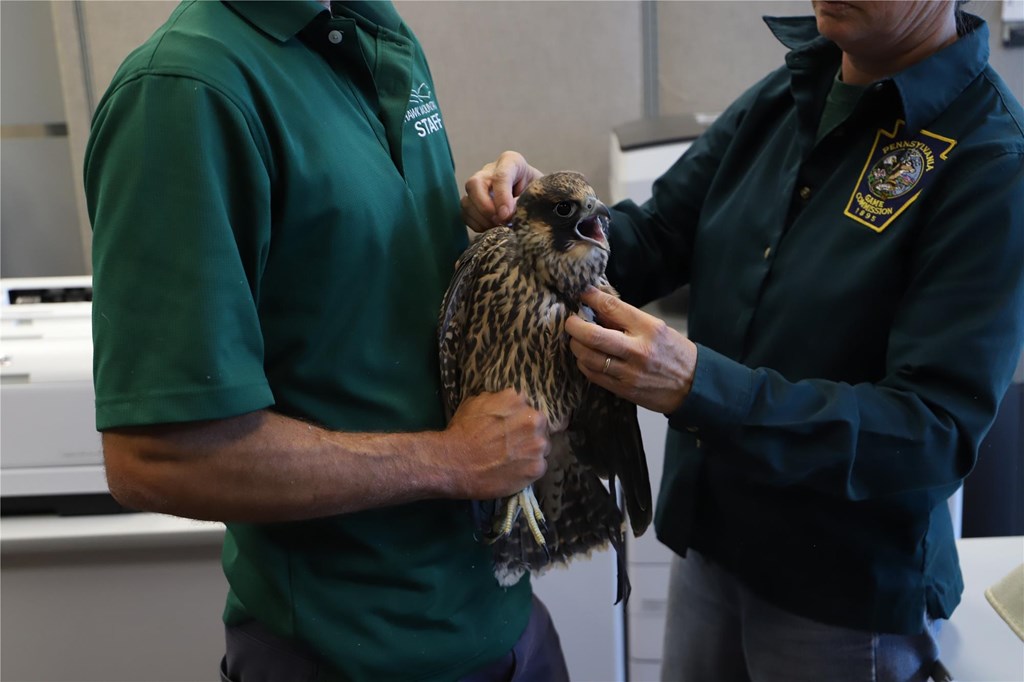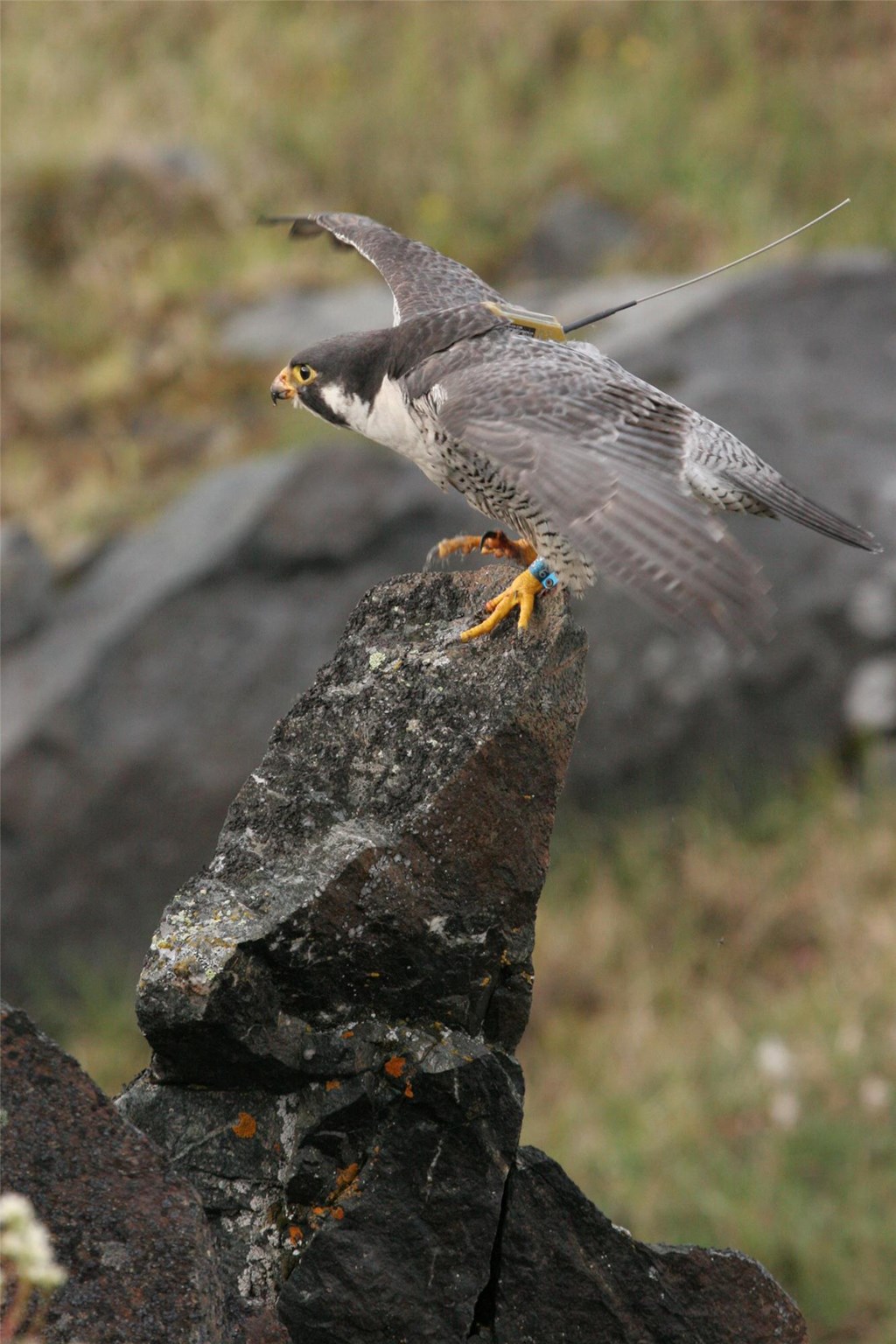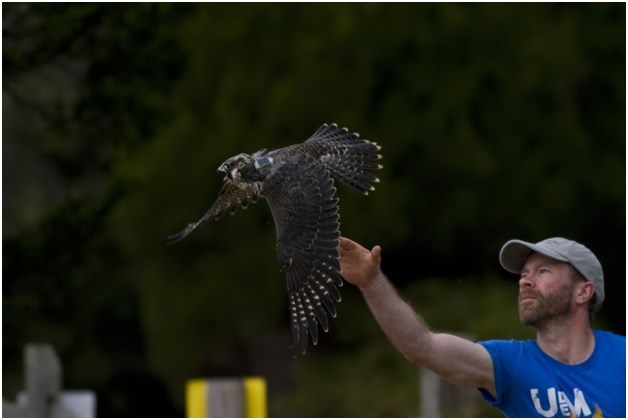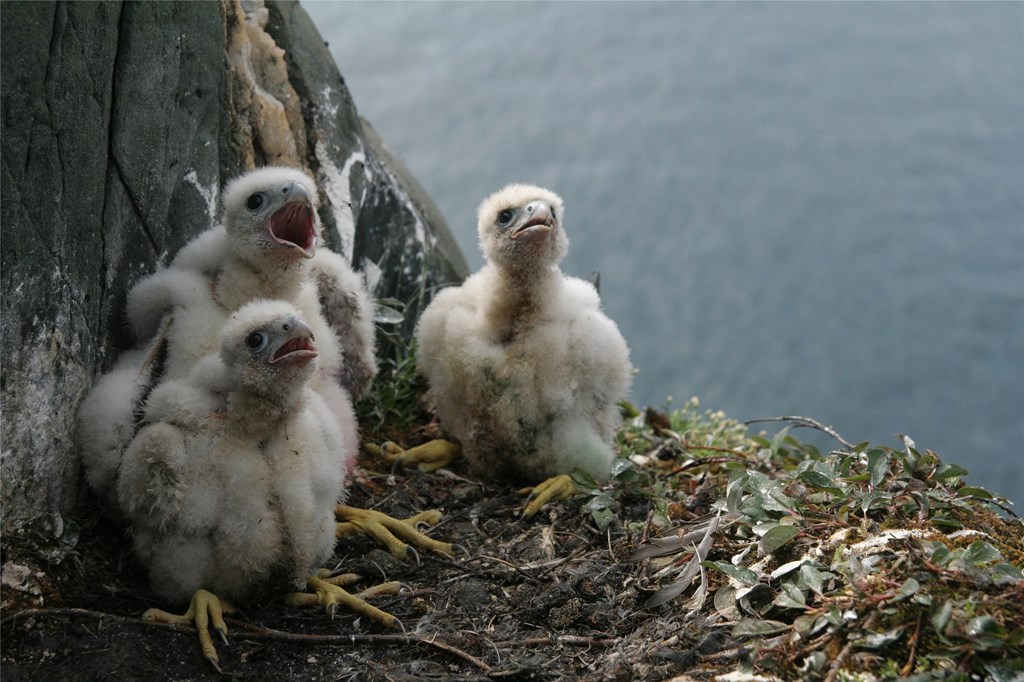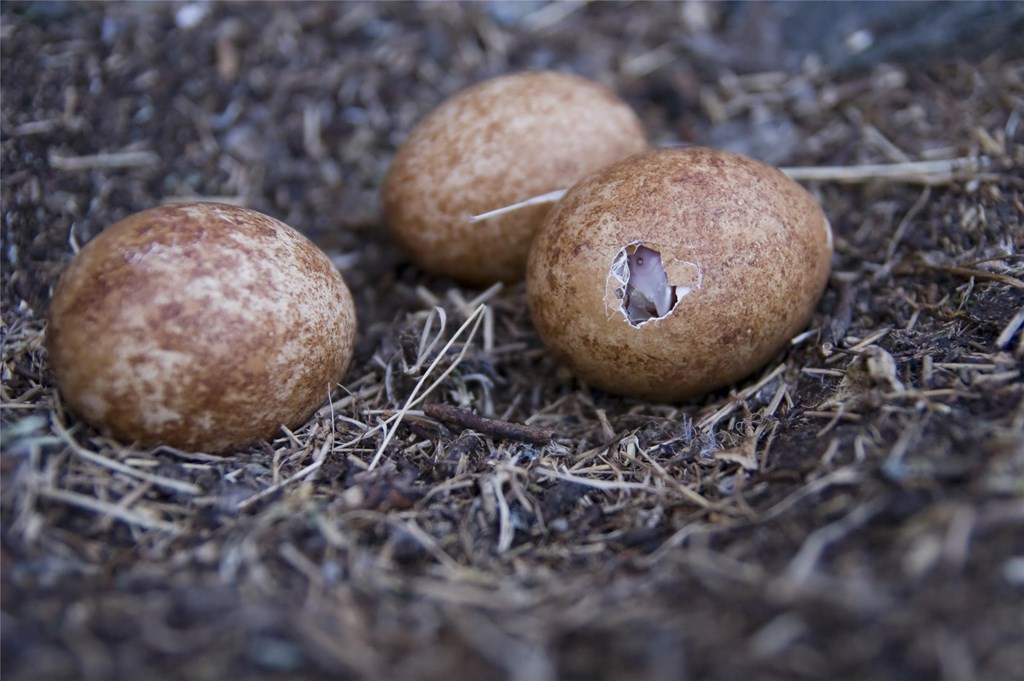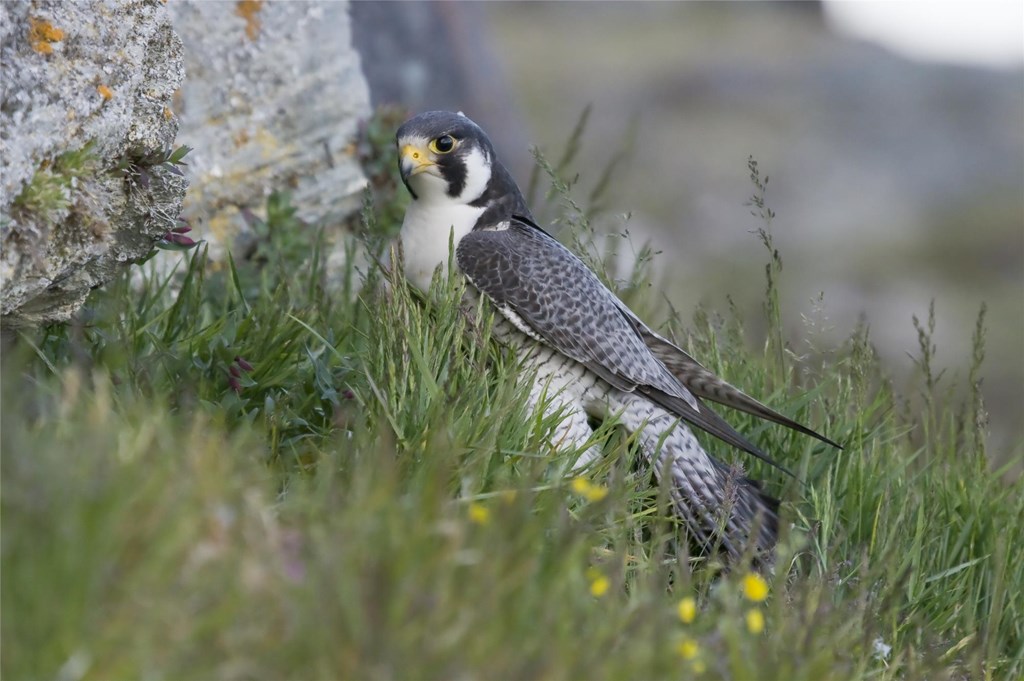Peregrine Falcons

Peregrine Falcons are one of the most widely recognized raptors in the world, claiming the title as the fastest animal on the planet with recorded dives of over 200 mph. Their Latin name, meaning “wanderer,” aptly describes their highly migratory and cosmopolitan existence as they are found on every continent except Antarctica, exhibiting both long-distance and partial migrations. For example, Northern tundra breeders in Greenland and Canada travel as far south as Central Argentina.
The documentation of migrating raptors at hawk watch sites like Hawk Mountain can be one of the best means of assessing population trends of a species. During the DDT era, decreasing counts of peregrines provided an important indicator of how harmful chemicals were negatively affecting raptor populations. Today however, even with the ban of DDT, peregrines still face challenges. Ongoing climate change is affecting migratory movements and habitat selection during the winter, as well as impacting the ability of peregrine parents to keep their eggs and chicks safe from rain and black flies on the breeding grounds. An increasingly developed world also forces some peregrines to adapt to urban life, and others to at least cohabitate with ever-encroaching humans. Through innovative research, we are working to better understand and proactively address these challenges.
Collaborative Work
We have been collaborating with several researchers worldwide to monitor the nesting success of peregrine falcons on breeding grounds in the Canadian Arctic for more than 10 years as part of the Ecological Studies and Environmental Monitoring at Bylot Island project. Additionally, we are partnering with the Pennsylvania Game Commission and Pennsylvania Power and Light Corporation (PPL) to deploy nanotags and satellite tracking units on peregrines from several nests throughout the state, including an appropriately located site on top of the Rachel Carson building in Harrisburg. These birds will be tracked using the Motus wildlife tracking system. From this data we hope to add clarity to the life history of peregrines and paint a more holistic picture of their annual cycle and potential responses to a changing climate. The need for this work has never been more pertinent.
The Future
The next steps in this important work are to:- Assess dispersal, survival and reproductive rates
- Assess comparative fledging success between urban sites and natural cliff faces
- Measure the threats facing peregrine falcons both in terms of Arctic industrial development as well as climate change
- Assess population trends, and effective population size
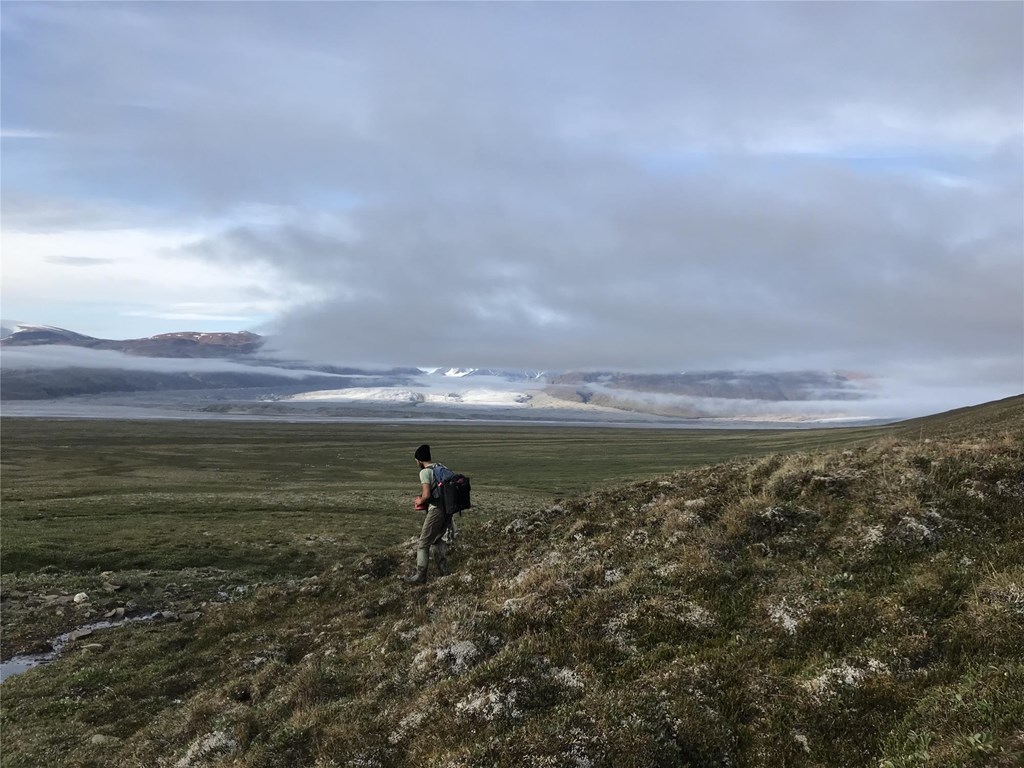
Support
We are thankful for the support and assistance we have received over the years from:
- PPL
- PA Game Commission
- Canada Research Chair in Polar and Boreal Ecology, Université de Moncton (Canada)
- The Natural Sciences and Engineering Research Council of Canada (NSERC)
- The Polar Continental Shelf Program (PCSP, Natural Resources Canada)
- The Fonds de Recherche du Québec Nature et Technologies
- The Canadian Network of Centres of Excellence ArcticNet
- Max Planck Institute for Ornithology (Germany)
- The community of Pond Inlet (Canada)
- Parks Canada (Sirmilik National Park)
- The W. Garfield-Weston Foundation
- Université Laval (Canada)
To help support this important research, please contact Senior Scientist Dr. JF Therrien (570-943-3411 x104, [email protected]) or donate today using the button below. Be sure to include in the comments of the form that the online gift is for peregrine falcon research.
